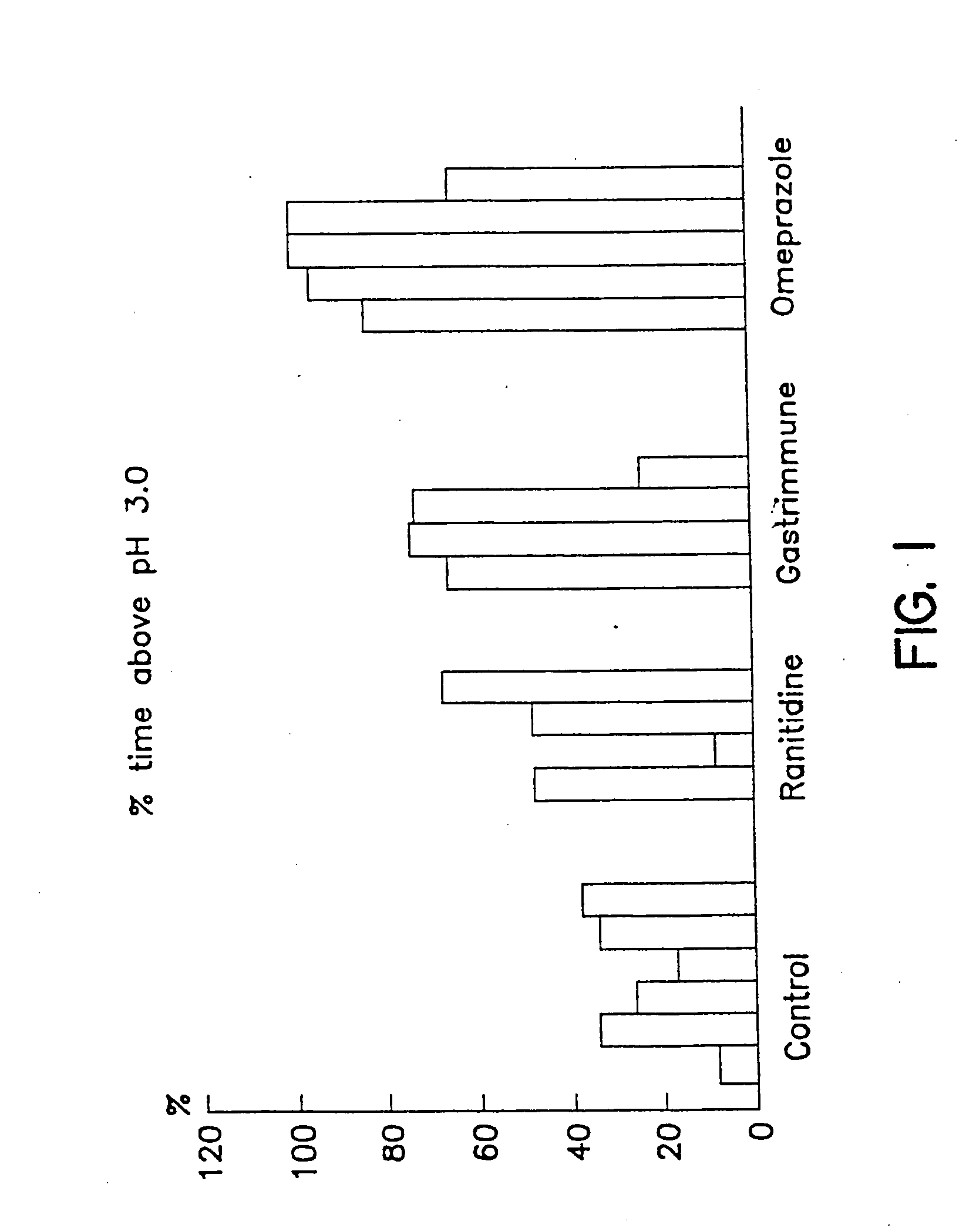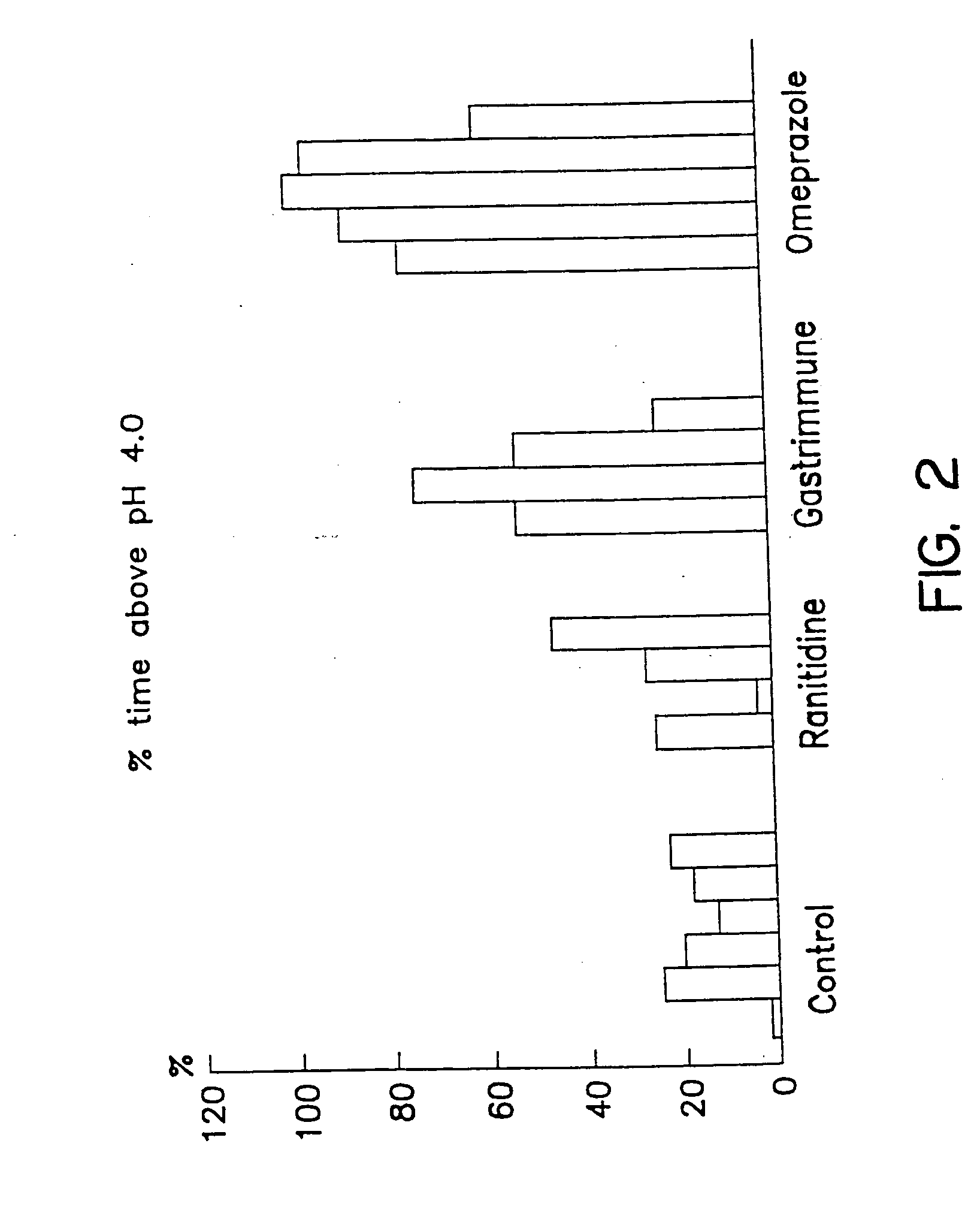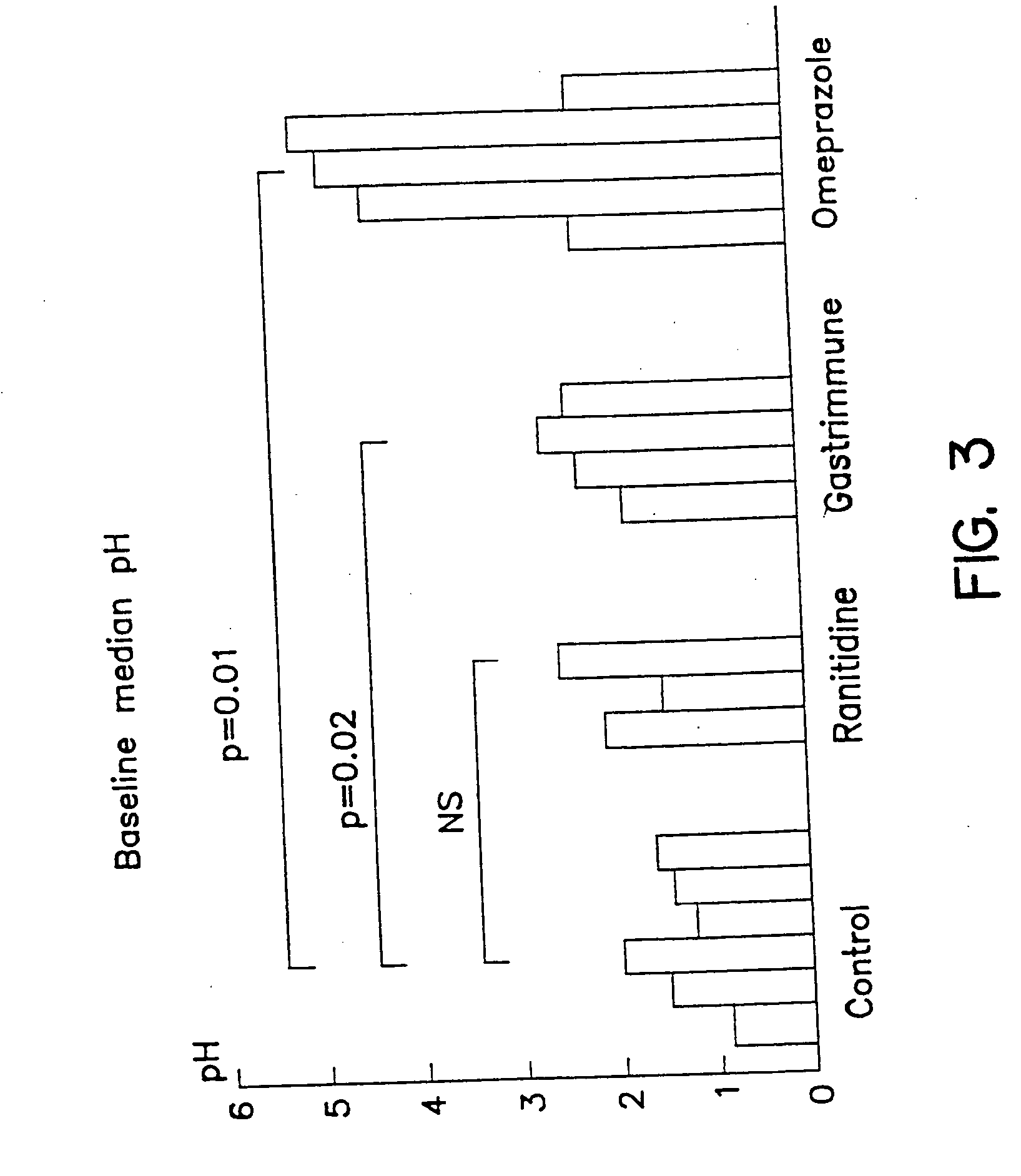Method for the treatment of gastroesophageal reflux disease
a gastroesophageal reflux disease and reflux disease technology, applied in the field of gastroesophageal reflux disease treatment, can solve the problems of insufficient acid neutralization mechanisms to restore the normal esophageal ph value, inducing pain or damage to the esophageal mucosa, and reducing undesirable side effects. , the effect of reducing the cost and effective treatment method
- Summary
- Abstract
- Description
- Claims
- Application Information
AI Technical Summary
Benefits of technology
Problems solved by technology
Method used
Image
Examples
example 1
[0035] Gastrin neutralization was achieved by using the immunological composition Gastrimmune which is composed of the amino terminal domain of gastrin-17 linked, via an amino acid or peptide spacer to diphtheria toxoid which acts as the immunogenic carrier. The antibodies raised by virtue of the design of the immunogen, cross-reacted with both amidated and glycine-extended gastrin-17, two known proliferative forms of gastrin.
[0036] Serum antibody titers rose within 2 weeks of the initial immunization to levels with an antigen binding capacity of >10−9M. The presence of anti-gastrin antibodies within the serum of Gastrimmune-immunized mice was confirmed by using an ELISA. As expected, no bound gastrin levels were detected in animals immunized with control immunogen.
example 2
[0037] As can be seen in FIG. 1 and FIG. 2, the pH of the stomach contents remained above pH 3 or 4 in anti-gastrin 17 immunized pigs for a longer period of time than in the pigs treated with ranitidine. In omeprazole treated pigs the stomach pH was maintained above pH 3 or 4 for a longer period of time than pigs which were treated with ranitidine and anti-G17 immunized pigs.
[0038] In addition, FIG. 3 shows the median pH exhibited by the stomach contents of control pigs when compared to ranitidine, anti-G17 immunization and omeprazole treatment. The data shows that the stomach pH is maintained at higher levels in pigs than those treated with ranitidine or anti-G17 immunization therapy. Anti-G17 immunized pigs had a median pH higher than ranitidine treated pigs.
[0039] Treatment of the pigs with ranitidine was less effective in preventing acid output from the stomach. Omeprazole treatment highly inhibited acid output. A single administration of anti-gastrin 17 immunization inhibited...
example 3
[0042] The human patient suffering from GERD is immunized with 200-400 μg of primary i.v. inoculation of G17 (1-9) Ser DT immunogen composition. After 2 weeks a booster of 100-200 μg of the G17 (1-9) Ser DT composition is similarly administered. When the anti-G17 titer has reached a level of about 10-300 pmole / ml sufficient to lower the serum gastrin level to near normal with a concomitant lowering of gastric acid secretion, about 10-20 mg oral omeprazole preparation is administered daily to further reduce or stabilize the gastric secretion at a level which essentially eliminates or substantially ameliorates the GERD symptoms.
PUM
| Property | Measurement | Unit |
|---|---|---|
| pH | aaaaa | aaaaa |
| pH | aaaaa | aaaaa |
| pH | aaaaa | aaaaa |
Abstract
Description
Claims
Application Information
 Login to View More
Login to View More - R&D
- Intellectual Property
- Life Sciences
- Materials
- Tech Scout
- Unparalleled Data Quality
- Higher Quality Content
- 60% Fewer Hallucinations
Browse by: Latest US Patents, China's latest patents, Technical Efficacy Thesaurus, Application Domain, Technology Topic, Popular Technical Reports.
© 2025 PatSnap. All rights reserved.Legal|Privacy policy|Modern Slavery Act Transparency Statement|Sitemap|About US| Contact US: help@patsnap.com



